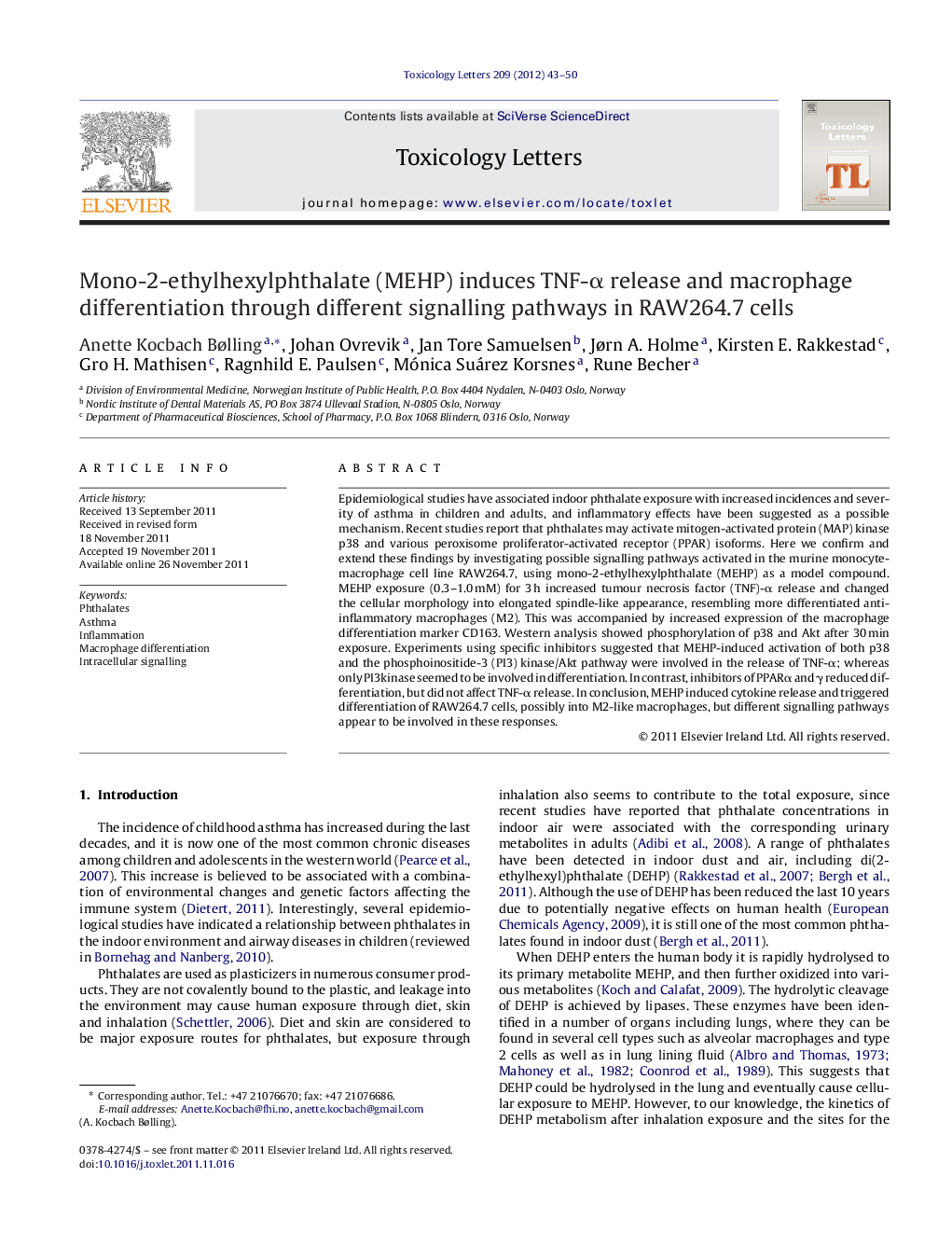| Article ID | Journal | Published Year | Pages | File Type |
|---|---|---|---|---|
| 2599835 | Toxicology Letters | 2012 | 8 Pages |
Epidemiological studies have associated indoor phthalate exposure with increased incidences and severity of asthma in children and adults, and inflammatory effects have been suggested as a possible mechanism. Recent studies report that phthalates may activate mitogen-activated protein (MAP) kinase p38 and various peroxisome proliferator-activated receptor (PPAR) isoforms. Here we confirm and extend these findings by investigating possible signalling pathways activated in the murine monocyte-macrophage cell line RAW264.7, using mono-2-ethylhexylphthalate (MEHP) as a model compound. MEHP exposure (0.3–1.0 mM) for 3 h increased tumour necrosis factor (TNF)-α release and changed the cellular morphology into elongated spindle-like appearance, resembling more differentiated anti-inflammatory macrophages (M2). This was accompanied by increased expression of the macrophage differentiation marker CD163. Western analysis showed phosphorylation of p38 and Akt after 30 min exposure. Experiments using specific inhibitors suggested that MEHP-induced activation of both p38 and the phosphoinositide-3 (PI3) kinase/Akt pathway were involved in the release of TNF-α; whereas only PI3kinase seemed to be involved in differentiation. In contrast, inhibitors of PPARα and γ reduced differentiation, but did not affect TNF-α release. In conclusion, MEHP induced cytokine release and triggered differentiation of RAW264.7 cells, possibly into M2-like macrophages, but different signalling pathways appear to be involved in these responses.
► MEHP caused differentiation and pro-inflammatory cytokine release in RAW cells. ► PPARs were involved in the differentiation but not in cytokine release. ► Lung effects of phthalates may involve PPAR mediated macrophage differentiation.
